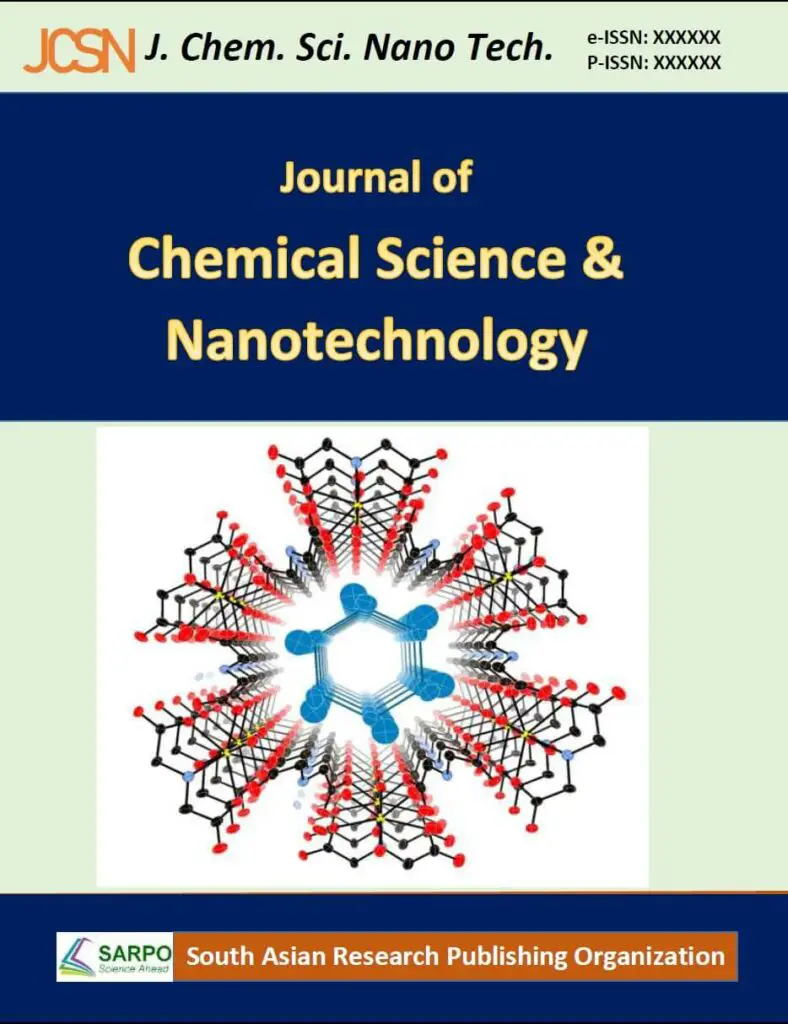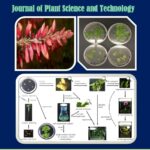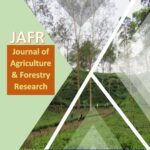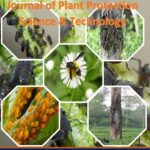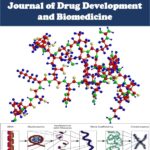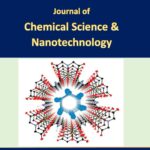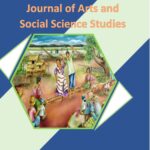
Editor in Chief:
DR. MOHAMMED JAKIR HOSSAIN
B.Sc. (Hons), M. Sc. (Chemistry), Ph. D (Nano Chemistry)
Bangladesh Bangladesh Forest Research Institute, Chattagram, BANGLADESH.
Journal Overview
Key Title: Journal of Chemical Science & Nanotechnology
Abbreviated Key Title: J. Chem. Sci. Nano Tech.
Variant Title: JCSN
Language: English
Journal of Chemical Science and Nanotechnology [JCSN] is an open access multidisciplinary journal that publishes fundamental and applied research work in different areas of chemical sciences and Nano-chemistry. The journal publishes quarterly in the months of January, April, July and October. It publishes original review articles, research articles and short communications. The journal is publishes in both print and online versions.
Frequency: 1 Volume, 4 Issues per Year
[1] Jan-Mar
[2] April-June
[3] July-Sept
[4] Oct-Dec
Aim and Scope
AIM AND SCOPE
The Journal of Chemical Science & Nanotechnology [JCSN] is an open access high quality scientific journal. The journal publishes chemical, pharmaceutical and biomedical review and research articles which include: Organic Chemistry, Physical Chemistry, Analytical Chemistry, Polymer Sciences, Medicinal Chemistry, Natural Chemistry, Biochemistry, Analytical Research Works, QSAR Studies, Nanotechnology, Biotechnological Research Works, Method and Process Development etc. The journal publishes original research papers, short communication, review paper, book reviews etc. The researchers are invited to submit original research papers in English (papers published elsewhere or under consideration elsewhere shall not be considered).
Authors guidelines
Authors Guideline
Journal of Chemical Science & Nanotechnology (JCSN) is an open access multidisciplinary journal that publishes original research articles, review articles and short-communication on all areas of Chemical science and Nano-chemistry. Submission of manuscript to this journal implies that the work is original. The work has not been published elsewhere and that is not consideration for publication to any other scientific journals.
Scope of the journal
Journal of Chemical Science & Nanotechnology (JCSN) publishes chemical, pharmaceutical and biomedical review and research articles which include: Organic Chemistry, Physical Chemistry, Analytical Chemistry, Polymer Sciences, Medicinal Chemistry, Natural Chemistry, Biochemistry, Analytical Research Works, QSAR Studies, Nanotechnology, Biotechnological Research Works, Method and Process Development etc.. The researchers are invited to submit original research papers in English (papers published elsewhere or under consideration elsewhere shall not be considered).
The journal publishes original research papers, short communication, review paper, book reviews etc. The researchers are invited to submit original research papers in English.
Manuscript preparation
Contributors submitting manuscript for consideration for publication should follow the following guidelines.
Style and format
Manuscripts should be prepared in MS word format and typewritten on an A4 sheet having ‘1.5’ line-spacing throughout the text. The margins should be 2.54cm (1inch) in all sides and page number should be consecutively on the bottom of the page. The manuscript should be written in Time new roman using ’12’ font size and not exceed 30 pages. Manuscripts must be written in English. For non-native English language authors, the article should be proof read by a language specialist. Poor use of English could result in rejection of the manuscript.
Manuscript content
For original research paper, the manuscript should be arranged in the following order: Title page (Title, Full Author name, Author affiliate address & email of corresponding author), Abstract, keywords, Introduction, Materials and methods, Results, Discussion (this section may be combined with results), Acknowledgements, References, Tables with legends, Figures with legends and Supplementary materials (if applicable).
Title and contact information
The first page should contain the full title, the full names of authors and affiliations of all authors (Department, Faculty, University, City, and Country) including a valid e-mail address for
Abstract
The abstract should contain brief summary of findings and conclusion of the study. The abstract should not contain abbreviations references or diagrams. The abstract must not go to more than 300 words each for original and review papers or 150 words for short communications.
Key words
Author should provide no more than 6 key words. The Key words should arrange alphabetically. Acronyms should be avoided.
Introduction
The introduction should be arguing the case study, outlining essential background and the objectives of the work. Avoid a detailed literature survey or a summary of the results.
Materials and methods
The materials and methods section should be include sufficient technical information about the materials and the analytical and statistical procedures used. Describe new methods completely and give sources of useful chemicals and equipment.
Results
Result and discussion can be written separately or combined. The results obtained from the experiments including their statistical evaluation and any explanation should be presented graphically or in tables in this section. This section may be organized into subheadings. Extensive interpretation of the results should be reserved for the Discussion section. Avoid similar data in both table and figure form. Photographs to those that is absolutely necessary to show the experimental findings. Number figures and tables in the order in which they are cited in the text, and be sure to cite all figures and tables.
Discussion
The Discussion section should provide an interpretation of the results in relation to previously published works. It should not contain extensive repetition of the Results section. The Discussion may be organized into subheadings.
Conclusion
In the conclusion section, author should state the most important outcome of the work by interpreting the findings at a higher level of abstraction than the Discussion and by relating these findings to the motivation stated in the Introduction. Do not simply summarize the points already made in the body. Conclusions must not contain references to the cited literature.
Acknowledgements
In this section author should give credit to people who have helped author with the research or with writing the paper. If the author work has been supported by a grant, author should also give credit for that in this section.
Scientific names
Scientific names should be complete and italics (genus, species, and authority, and cultivar where appropriate) for every organism at the first mention. The generic name can be abbreviated from second times. In addition, gene name must be italics.
Nomenclature
Nomenclature for genes and proteins must follow international standards. All gene symbol and loci should be in italics and capital. All chemical, biochemical, and molecular biology nomenclature should be followed by IUBMB recommendation (http://www.chem.qmul.ac.uk/iubmb/). Database for gene or protein sequence or others should be given reference according to EMBL; GenBank, or the Protein Data Bank.
Tables and Figures
- All illustrations (photographs, drawings, graphs, etc.), not including tables, must be labelled “Figure.” Figures and table must be submitted at the end of the manuscript, after the references, not in the running text.
- All tables and figures must have a caption and/or legend and be numbered (e.g., Table 1, Figure 2), unless there is only one table or figure, in which case it should be labelled “Table” or “Figure” with no numbering. Captions must be written in sentence case (e.g., Microscopic view of Trichoderma.). The font used in the figures should be Times New Roman.
Symbols, units, and abbreviations
- In general, the journal follows CSE Style and Format, The CSE Manual for Authors, Editors, and Publishers, Council of Science Editors, Reston, VA, USA (7th ed.).
- If symbols such as ×, µ, η, or ν are used, they should be added using the Symbols menu of Word.
- Degree symbols (°) must be used from the Symbol menu, not superscripted letter o or number 0.
- The International System of Units (SI) should be employed for measurements. When one unit appears in a denominator, the unit should be presented as a fraction (g/m2); for two or more units in a denominator, use negative exponents (g m-2d-l).
- Insert one space between figures and units, except for % and units of temperature, latitude, and longitude (e.g., 5 m, 55 ℃, 500 kg).
- Times of day should be presented using a 24 hour clock (e.g., 0800 hr, 2.030 hr). Dates should be presented as for example, 30 Jan 2013.
- In the text, numbers should be Arabic numerals, except when beginning a sentence. Numbers greater than 999 should have commas (e.g., 10,000).
- Spaces must be inserted between numbers and units (e.g., 3 kg) and between numbers and mathematical symbols (+, –, ×, =, ), but not between numbers and percent symbols (e.g., 45%).
All abbreviations and acronyms should be defined at first mention. Latin terms such as et al., in vitro, or in situ should not be italicized.
- Common molecular, chemical, immunological, and hematological terms can be used without definition in the title, abstract, text, tables, and figure legends (e.g., bp, kb, kDa, DNA, cDNA, RNA, mRNA, PCR, SDS-PAGE, ELISA, IgG, RBC, and WBC). Other common abbreviations are as follows (the same abbreviations are used for plural forms): hr (hour; use 0-24:00 h for time), sec (second), min (minute), day (not abbreviated), week (not abbreviated), month (not abbreviated), year (not abbreviated), L (liter), mL (milliliter), μL (microliter), g (gram), kg (kilogram), mg (milligram), μg (microgram), ng (nanogram), pg (picogram), g (gravity; not × g), n (sample size), SD (standard deviation of the mean), SE (standard error of the mean).
Statistical analysis
Statistical analysis is to be done if necessary. Biological data without statistical analysis cannot be accepted.
References
The manuscript should be checked carefully to ensure that the spellings of the authors’ names and the years are exactly the same in the text as given in the reference list.
- Unpublished results and personal communications are not recommended in the reference list, but may be mentioned in the text. If these references are included in the reference list they should include a substitution of the publication date with either ‘Unpublished results’ or ‘Personal communication’.
- Citation of a reference as ‘in press’ implies that the item has been accepted for publication.
- In the case of publications in languages other than English, the published English title should be provided. If the publication is not published with an English title, provide the original title only; do not provide a self-translation.
Citation in the text
- In-text citations appear in brackets, and consist of the author(s) last name, as well as the document’s year of publication (e.g. Rahman 2012). The end reference list appears in alphabetical order by author last name.
- If the author’s name is clearly mentioned in the text, it can be directly followed by the year of publication, in parentheses: Zakaria (2020) isolated and identified 5 species of Trichoderma from the rhizosphere of rubber trees in Malaysia, namely…..
- If a document has two authors, include both surnames separated by “and”. For works with three or more authors, include only the first author name, followed by “et al.”: … (Rahman and Illias 2012). … (Rahman et al. 2013).
- If the author cites several sources at once, list them in chronological order, or alphabetically if two or more works were published in the same year, and separate each one with a semicolon: … (Rahman, 1963; Rahman and Alam, 1975; Beagum, 1975; Alam et al. 1992).
- Citing two or more works written by the same author in the same year, add a designator (a, b, c…) to distinguish them. (Rahman 2011a, 2011b).
Use the same designators in the reference list: …
Rahman MA. 2011a. Isolation and Identification…Rahman MA. 2011b. Screening of Trichoderma spp. and … - If the author would like to cite a source that is cited in another document, it is always best to consult and cite the original source. The original author can be acknowledged within the text, but only the item seen appears in the reference list. … (Rahman, 2001, cited in Alam, 2010) or … Alam (2010) describes Rahman 2001 study on… In this example, the reference list would include only Alam work: Alam, M. F. 2010. The Commonwealth of Life: Economics for a Flourishing Earth. 2nd ed. Montreal (QC): Black Rose Books.
- If the author of a document is an organization, corporation, government department, university, etc., use an abbreviated form of the organization in the in text citation, by retaining the first letter of each word in the name, or some other recognized abbreviation:
- UNESCO. 2006.
Reference list
Compile all references together in a list at the end of the manuscript text. Authors must reference all previous publications in which portions of the present work has appeared. Articles accepted for publication should be cited as “in press”; the DOI should be given if the paper is published online only. South Asian Research Publishing Organization (SARPO) will use the following reference style for published articles.
References should be listed alphabetically. Abbreviated journals names must be written, not full name of journal.
Author’s Names
- The names of authors are written in reverse order. Include the initials for the first and middle names. End this information with a period.
Example: Full name: Mohammad Ahsanur Rahman
Structure: Last name, First initial. Middle initial.
Example: Rahman, M. A.
Two or More Authors
- When two or more authors work together on a source, write them in the order in which they appear on the source, using this format:
Structure: Last name, F. M.; Last name, F. M.; Last name, F. M.; Last name, F. M.; Last name, F. M.
Example: Rahman, M. A.; Begum, M. F.; Rahman, M. M.; Bari, M. A.; Ilias, G. N. M.; Alam, M. F.
Journal article
For journals
Structure: Author(s) last name, First initial. Middle initial. Article title. Abbreviated journal name in italic. Year, Volume (Issue), Pages.
Example: Rahman, M. A.; Begum, M. F.; Rahman, M. M.; Bari, M. A.; Ilias, G. N. M.; Alam, M. F. Isolation and identification of Trichoderma species from different habitats and their use for bioconversion of organic solid waste. Turk. J. Biol. 2009, 35(2), 183-194.
For journal articles published online ahead of print or online only, the DOI should be used:
Rahman, M. A.; Moni, Z. R.; Hussen, M. A.; Ansari, T. H. Prevalence of fungal diseases in medicinal plants in northern region of Bangladesh. SAARC J. Agric. 2009, 17(2), 197-212. DOI: https://doi.org/10.3329/sja.v17i2.45306
For Books
Structure: Author(s). Book Title (In Italic), Edition,; Publisher: Place of Publication, Year; pages.
Example: Falero, E. M.; Fernandez, S. M.; Antonio, D.; Abril, G. Quantitative techniques in participatory forest management. 4th ed.; Bota, R., Ed.; Academic Press: New York, 2003; pp 1-39.
Chapter in a book
Structure: Author(s). Book title (In italic). Edition.; Publisher: Place of Publication. Chapter #, Chapter title, Year; pp. Pages of the chapter.
Example: Shmulsky, R.; Jones, D. P. Forest product and wood science an introduction. 6th ed.; John Wiley & Sons: Surrey (U.K). Chapter 6, Juvenile wood, reaction wood, and wood of branches; pp 107-139.
Thesis or dissertation
Structure: Author. Title of the Thesis. Level of Thesis, Degree-Granting University, Location of University, Date of Completion.
Example:
- Rahman, M. A. Screening of Trichoderma and their efficacy as a bioconversion agent of municipal solid waste through appropriate technique of solid state fermentation. Ph.D. Dissertation, University of Rajshahi, Bangladesh, 2009.
- Mäckel, H. Capturing the spectra of silicon solar cells. Ph.D. Thesis, The Australian National University, December 2004.
Conference papers or proceedings
Manly, S. Collective flow with PHOBOS. Presented at the 20th Winter Workshop on Nuclear Dynamics [Online], Trelawny Beach, Jamaica, March 15–20, 2004. University of Rochester, DSpace Web site. http://hdl.handle.net/1802/228 (accessed Oct 13, 2004).
Structure: Author(s). Title of paper/presentation. Presented at conference title [Online], Place, Date; Paper Number. Title of the Site. URL (accessed Month Day, Year).
Example: Torreta, N. K.; Takeda, H.; Azuma, J. I. Presented at the 20th Winter Workshop on Nuclear Dynamics [Online], Trelawny Beach, Jamaica, March 15–20, 2004. University of Rochester, DSpace Web site. http://hdl.handle.net/1802/228 (accessed Oct 13, 2004).
Online source
For online articles provided as content in a subscription database, use the reference style for periodicals or nonscientific magazines as appropriate, and include the name of the database provider, the URL of the top page, and the date accessed.
Example: Hallet, V. Scanning the Globe for Organic Chemistry. U.S. News and World Report [Online], April 19, 2004, p 59. Business Source Premier. http://www.epnet. com/academic/bussourceprem.asp (accessed April 24, 2005).
Articles published online
Structure: Authors. Title of Article. Journal Abbreviation [Online early access]. DOI or other identifying information. Published Online: Month Day, Year. URL (accessed Month Day, Year).
Example:
Rahman, M. A,; Begum, M. F.; Alam, M. F. Screening of Trichoderma Isolates as a biological control agent against Ceratocystis paradoxa causing pineapple disease of Sugarcane. Mycobiology. [Online early access]. DOI: 10.4489/MYCO.2009.37.4.277. Published Online: December 31, 2009. https://www.ncbi.nlm.nih.gov/pmc/articles/PMC3749418/. htm (accessed September 20, 2020).
Electronic book
Books published online generally correspond to printed versions, and the reference styles are similar. Online location and access date should always be included when citing online books. Reference works published online are often updated with new content, and the dates on which sections were posted or updated should also be included.
Structure: Author(s). Book Title [Online]; Series Information (if any); Publisher: Place of Publication, Year, Volume Number, Pagination. URL (accessed Month Day, Year).
Example: Grebner, D.; Bettinger, P.; Siry, J. Introduction to Forestry and Natural Resources [Online]; Academic Press, Amsterdam, 2013; pp 177-180. https://www.sciencedirect.com/science/book/9780123869012 [accessed 2017 Dec 30].
Online books with editors
Authors. Chapter Title. In Book Title [Online]; Editor 1, Editor 2, etc., Eds.; Series Information (if any); Publisher: Place of Publication,Year; Volume Number, Pagination. URL (accessed Month Day, Year).
Oleksyn, B. J.; Stadnicka, K.; Sliwinski, J. Structural Chemistry of Enamines: A Statistical Approach. In The Chemistry of Enamines [Online]; Rappoport, Z., Ed.; The Chemistry of Functional Groups; Patai, S., Rappoport, Z., Series Eds.; Wiley & Sons: New York, 1994; Chapter 2, pp 87–218. http://www3. interscience.wiley.com/cgi-bin/summary/109560980/SUMMARY (accessed April 24, 2005).
Online encyclopedias
Structure: Article Title. Encyclopedia Title, edition [Online]; Publisher, Posted Online Posting Date. URL (accessed Month Day, Year).
Example: Alkanolamines from Nitro Alcohols. Kirk-Othmer Encyclopedia of Chemical Technology [Online]; Wiley & Sons, Posted March 14, 2003. http://www.mrw. interscience.wiley.com/kirk/articles/alkaboll.a01/frame.html (accessed Nov 7, 2004).
Potential reviewers:
Potential reviewers
While online submission, the authors are requested to provide 3 – 4 potential relevant reviewers from developed countries with their complete details (designation, institute, postal address, telephone, fax and official e-mail address). After initial review in the journal management, the manuscript may be sent to few of the given reviewers; however, the publication largely depends upon the response of reviewers and time taken by them in reviewing the manuscript.
Galley proofs
The manuscripts are typeset as per journal published format upon satisfactory revision and acceptance. Once it is done, the proofs will be sent to authors for correction through E-mail, if required. The authors are requested to return the manuscript with minor changes within a week time.
Reprints
As the journal is available online, no hard copy will be provided to the corresponding author on publication of his/her article. The article will be available freely from net where it can be downloaded from anywhere. However, if required, the colored prints will be available upon payment.
Editorial Board
Editor-In-Chief
DR. MOHAMMED JAKIR HOSSAIN
B.Sc. (Hons), M. Sc. (Chemistry) (D.U.), Ph.D (Nano Chemistry) (Japan)
Head of the Division
Forest Chemistry Division
Bangladesh Forest Research Institute, Chattogram, BANGLADESH.
E mail:
Associate Editor
MD. ABU TAHER
Sc. (Hons), M. Sc. (Chemistry) (R.U), Ph.D (South Korea)
Senior Lecturer &
Head of the Department
Department of Chemistry
Faculty of Science and Engineering
European University, Dhaka, BANGLADESH.
Advisory Editorial Board Members
| DR. MD. MAHBUBOR RAHMAN M.Sc. (Raj), PhD (France), Postdoc, (Belgium) Professor Department of Chemistry University of Rajshahi, Rajshahi, BANGLADESH | DR. MD. MAHBUBOR RAHMAN M.Sc. (Raj), PhD (France), Postdoc, (Belgium) Professor Department of Chemistry University of Rajshahi, Rajshahi, BANGLADESH |
| DR. MD. KUDRAT – E – ZAHAN M.Sc. (Raj), PhD (Japan) Professor Department of Chemistry University of Rajshahi, Rajshahi, BANGLADESH | DR. MD. KUDRAT – E – ZAHAN M.Sc. (Raj), PhD (Japan) Professor Department of Chemistry University of Rajshahi, Rajshahi, BANGLADESH | ||
| DR. MD. MAHBUBOR RAHMAN M.Sc. (Raj), PhD (France), Postdoc, (Belgium) Professor Department of Chemistry University of Rajshahi, Rajshahi, BANGLADESH | |||||||
| DR. MD. KUDRAT – E – ZAHAN M.Sc. (Raj), PhD (Japan) Professor Department of Chemistry University of Rajshahi, Rajshahi, BANGLADESH | |||||||
| DR. MD. MAHBUBOR RAHMAN M.Sc. (Raj), PhD (France), Postdoc, (Belgium) Professor Department of Chemistry University of Rajshahi, Rajshahi, BANGLADESH | |||||||
| DR. MD. KUDRAT – E – ZAHAN M.Sc. (Raj), PhD (Japan) Professor Department of Chemistry University of Rajshahi, Rajshahi, BANGLADESH | |||||||
| DR. MD. SAIDUL ISLAM M.Sc. (Raj), PhD (Japan) Professor Department of Materials Science and EngineeringUniversity of Rajshahi, Rajshahi, BANGLADESH |
Abstract and Indexing
The articles of Journal of Chemical Science & Nanotechnology are included in the following databases/resources:
Index CopernicusDOAJ
Google Scholar
Journalseek
Open J-Gate
ProQuest
NewJour
Ulrich’s
Socolar
Journal TOCs UK
International Scientific Indexing
Cross ref
Research Gate
Review of Aromatic and Medicinal Plants
Rural Development Abstracts
CABI Publishing
Advances Science Index
InfoBase Index
OCLC
Publication Frequency
Journal of Chemical Science & Nanotechnology [JCSN] is an open access multidisciplinary journal that publishes fundamental and applied research work in different areas of Chemical Science and Nano-chemistry. The journal publishes quarterly in the months of January, April, July and October. It publishes original review articles, research articles and short communications. The journal is publishes in both print and online versions.
Frequency: 1 Volume, 4 Issues per Year
[1] Jan-Mar
[2] April-June
[3] July-Sept
[4] Oct-Dec
Reviewers
Reviewers
We would like to thank the following reviewers who have taken part in the review process for Journal of Chemical Science and Nanotechnology.
Bibliographic Information
Bibliographic Information
e-ISSN:xxxxxxxxxxxxxxxx
p-ISSN:xxxxxxxxxxxxxxxx
Journal of Chemical Science & Nanotechnology [JCSN] is an open access multidisciplinary journal that publishes fundamental and applied research work in different areas of Chemical Science and Nano-chemistry. The journal publishes quarterly in the months of January, April, July and October. It publishes original review articles, research articles and short communications. The journal is publishes in both print and online versions.
Article Processing Charge
Open Access Policy
This journal allows readers to read, download, copy, distribute, print, search, or link to the full texts of its articles and to use them for any other lawful purpose.
Currently, there is no article processing charges in this journal.
Publication Ethics
Ethical standards for publication exist to ensure reliable & high-quality scientific publications, public trust in scientific findings, and that people (especially researchers) receive credit for their ideas. The ethical issues presented here are those that are the most commonly and widely accepted in research in academia and the research community today. The ethical issues in research may be violated in different ways:
Unethical experimentation
Research with animals
Animals play a significant role in research. They are used in a variety of ways by researchers, such as for testing new pharmaceuticals, as teaching tools for medical students, and as experimental subjects for new surgical procedures. Research with animals is necessary and vital to biomedical research because animal research is frequently a necessary first step towards research involving new medical treatments and pharmaceuticals intended for human use. In order to prevent the mistreatment of animals the United States government first passed the Animal Welfare Act in 1966 (Animal Welfare Act and Regulations).
Research with human subjects
Respect for Persons – Informed Consent: Informed consent exists to ensure that all research involving human subjects allows for voluntary participation by subjects who understand what participation entails. Informed consent means that people approached and asked to participate in a research study must: a) know what they are getting involved with before they commit; b) not be coerced or manipulated in any way to participate; and, c) must consent to participate in the project as a subject.
Respect for Persons – Privacy and confidentiality: Privacy and confidentiality are very important components for research involving human subjects. People have a right to protect themselves, and information gathered during research participation could harm a person by violating their right to keep information about themselves private. The information gathered from people in biomedical studies has a unique potential to be particularly embarrassing, harmful, or damaging.
Guest authorship /Co-authorship
All individuals who made significant scientific contributions to the research work should be given the opportunity to be included as coauthors. Other persons who contributed to the study should be acknowledged but need not be identified as coauthors. Every coauthor should be aware of the content of an article to be submitted, agree to its submission and share appropriate responsibility for the work. Any individual unable to take appropriate responsibility for the article should not be included as a coauthor.
Authorship disputes
Authorship is the process of deciding whose names belong on a research paper. In many cases, research evolves from collaboration and assistance between experts and colleagues. Some of this assistance will require acknowledgement and some will require joint authorship. Each person listed as an author on an article should have significantly contributed to both the research and writing. In addition, all listed authors must be prepared to accept full responsibility for the content of the research article.
Conflict of interest
Any potential conflicts of interest (e.g: employment, stock ownership, patent licenses etc.) should be reported to the editorial office. These include personal, academic, political, financial and commercial gains.
Research fraud
Research fraud is publishing data or conclusions that were not generated by experiments or observations, but by invention or data manipulation. There are two kinds in research and scientific publishing:
Fabrication: Making up research data and results and recording or reporting them.
Falsification: Manipulating research materials, images, data, equipment or processes. Falsification includes changing or omitting data or results in such a way that the research is not accurately represented. A person might falsify data to make it fit with the desired end result of a study.
Data management
The three issues for data management (ethical and truthful data collection, responsibility of collected data and data sharing) can be addressed by researchers before and during the establishment of a new research project. Ethical data collection refers to collecting data in a way that does not harm or injure someone. Harm and injury could range from outright physical injury to harmful disclosure of unprotected confidential health information. In comparison, truthful data collection refers to data that, once collected, are not manipulated or altered in any way that might impact or falsely influence results. Assigning and ensuring responsibility for collecting and maintaining data is one of the most important ethical considerations when conducting a research project.
Duplicate submission and publication
Duplicate or multiple submissions is the most common ethics violation encountered. It is unethical for authors to publish articles describing essentially the same research result in more than one journal. It is also unacceptable for authors to submit the same manuscript concurrently to more than one journal.
Duplicate publication or self-plagiarism is the publication of an article that is identical or overlaps substantially with an article already published elsewhere, with or without acknowledgment.
Redundant publication
Redundant or repetitive publication is the publication of copyrighted material with additional new or unpublished data.
Peer review
The two most important ethical concepts in the peer review process are confidentiality and protection of intellectual property. Reviewers should not know the author (or authors) they are reviewing and the author (or authors) should not be told the names of the reviewers. Only by maintaining strict confidentiality guidelines can the peer review process be truly open and beneficial. Likewise, no person involved in the peer review process- either the editor, reviewers, or other journal staff can publicly disclose the information in the article or use the information in a submitted article for personal.
Plagiarism and self-plagiarism
Authors should not use without attribution, text, concepts, data, figures, or tables from another work published either by others or by themselves. Plagiarism of others’ works and self-plagiarism are serious breaches of ethics and are not tolerated. If a direct quotation is appropriate, the original source should be properly cited. Figures, tables, and other images reproduced from another source normally require the publisher’s permission.
It is noticed that SARPO follows strictly the above ethical issues. In the event that there are documented violations of any of the above mentioned policies (except peer review) of SARPO, regardless of whether or not the violations occurred in a journal published by SARPO, the following rules will be applied:
- Immediate rejection of the infringing manuscript.
- Immediate rejection of every other manuscript submitted to any journal published by SARPO by any of the authors of the infringing manuscript.
- Prohibition against all of the authors for any new submissions to SARPO, either individually or in combination with other authors of the infringing manuscript, as well as in combination with any other authors. This prohibition will be imposed for a minimum of 2 years.
- Prohibition against all of the authors if any from serving on the Editorial Board of SARPO.
In cases where the violations of the above policies are found to be particularly offensive/flagrant, the publisher reserves the right to impose additional restrictions beyond those described above.
Policies and Statements
Open Access Policy
Open Access (OA) has become an important way to make research findings freely available for anyone to access and view. Open Access to research data makes data more widely available for re-use by others to support research, innovation and wider public use. All the articles published in SARPO journals are made freely accessible online immediately after publication in an easily readable format, without any subscription or registration barrier. SARPO calls for all author accepted manuscripts of journal articles or conference proceedings to be deposited in an Open Access repository at the time of acceptance for publication.
Peer-review Policy
The manuscript will be reviewed by two suitable experts in respective subject area. The reports of both the reviewers will be considered when deciding on acceptance/revision or rejection of a manuscript. Editor-In-Chief will decide promptly whether to accept, reject, or request revisions of referred papers based on the reviews and editorial insight of the supporting journals. In addition, Editors will have the option of seeking additional reviews when needed. Authors will be advised when Editors decide further review is needed.
All research articles published in SARPO journals undergo full peer review policy. Key characteristics of which are listed below:
- All research articles are reviewed by at least two suitably qualified experts.
- All publication decisions are made by the journals’ Editors-in-Chief
- Members of the Editorial Boards advice and guidance to the Editors-in-Chief generally and to assist decision making on specific submissions
- Editorial Assistants provide the administrative support that allows maintaining the integrity of peer review while delivering rapid turn around and maximum efficiency to authors, reviewers and editors alike.
- SARPO Journals additionally benefit through the manuscript referral process from the high-quality peer review conducted by established journals.
Copyright Policy
All the articles published in SARPO journals will be distributed under a creative commons license. The journal allows the author(s) to hold the copyright of their work (all usages allowed except for commercial purpose).
Author Self-Archiving Policy
The Journal allows the authors to self-archive pre-print, post-print and publisher’s version of the article in any OAI-compliant repository. With no embargo period, authors are permitted to deposit the complimentary copy of their manuscript in their institutional repository or in repositories designated by their funding body, provided they refer to the published IET version.
Plagiarism Policy
According to Wikipedia, plagiarism is the “wrongful appropriation and purloining and publication of another author’s language, thoughts, ideas, or expressions, and the representation of them as one’s own original work”; while self-plagiarism is “the reuse of significant, identical, or nearly identical portions of one’s own work without acknowledging that one is doing so or without citing the original work”.
By submitting articles to SARPO journals the author attests that none of the part of manuscript is plagiarized from other sources. Proper reference is provided for all contents extracted from other sources. The authors should ensure that they have written entirely original works, and if the authors have used the work and/or words of others that this has been appropriately cited or quoted.
If the Editors or reviewers suspect plagiarism, submitted articles will be checked with plagiarism detection software. If plagiarism is strongly suggested, then the authors will be contacted for an explanation. If the authors express ignorance or unawareness, the Editors may allow re-submission and the authors warned as to the seriousness of plagiarism. In the case of a submitted article having been found to have been totally or substantially published elsewhere, the submitted article is rejected outright. Authors will be contacted for an explanation and their institution may be contacted. The Editors may ban the authors from submitting to the Journal for a defined time period. The Editors will use the COPE (Committee on Publications Ethics) guidelines (www.publicationsethics.org).
If an article accepted and published in the SARPO journals is subsequently discovered to have previously been published substantially or in full elsewhere, the authors will be contacted for an explanation. Their institutions may be notified and the authors maybe banned from future submissions for a specified time period. Additionally, the offending article in the Journal will be retracted from electronic data bases and a formal retraction notice, with full reasons, will be published in the Journal.
If it is discovered that an article published in the SARPO journals is subsequently substantially or in full published in another journal, the Editor of that journal will be contacted with full details.
Disclaimer
The author(s) of the articles published in SARPO Journals are solely responsible for the content of the article. Facts and opinions in articles published on SARPO Journals are solely the personal statements of respective authors. Authors are responsible for all contents in their article(s) including accuracy of the facts, statements, citing resources, and so on. Editors of SARPO Journals disclaim any liability of violations of other parties’ rights, or any damage incurred as a consequence to use or apply any of the contents of articles. Material submitted to SARPO Journals must be original and not published or submitted for publication elsewhere. Authors submitting a contribution to SARPO Journals who have related material under consideration or in press elsewhere should upload a clearly marked copy at the time of submission and draw the editor’s attention to it in their cover letter. If a part of a contribution that an author wishes to submit to SARPO Journals has appeared or will appear elsewhere, the author must specify the details in the cover letter. Consideration by the SARPO Journals is possible if the main result, conclusion, or implications are not apparent from the other work, or if there are other factors, for example if the other work is published in a language other than English. Author is responsible to get permission from previous publisher or copyright holder if an author is re-using any part of paper (i.e. figure or figures) published elsewhere, or that is copyrighted. The editors consider all material in good faith that their journals have full permission to publish every part of the submitted material including illustrations.
Editorial Workflow
Editorial Workflow
All submitted manuscripts undergo an extensive peer-review process and circulate among Authors, Editors/Associate Editors, Reviewers, and Editorial Office before final publication. Generally, this is a single-blind process where recommendation of more than two reviewers is sought and finally a decision is commented directly by the Editor-in-Chief or indirectly via associate/academic editor.
The whole process consists of below-provided editorial workflow, and following sections provide notes on each step:
Quality Control
All submitted manuscripts are initially quality controlled by the Editorial Office for suitability of the manuscript to the intended journal, manuscript formatting, reference provision, plagiarism checking and completion of all necessary files required to perform review process.
Peer Review Process
Once initial quality controls are passed, the manuscript is forwarded to appropriate Editor or Associate Editor depending upon whether it is a regular manuscript, part of the special issue or Guest Editorial. In case of a conflict of interest, a suitable Editorial Board Member is selected. Assigned handling editor decides the initiation of review process or decline to do so based on the quality of the presented work and scope of the journal. If Editor finds the manuscript of high quality and is within the aims and scope of the journal, the manuscript is sent to expert reviewers in the field and aimed to collect more than two reviewer’s recommendations.
The process is single-blind for most journals, meaning that the author does not know the identity of the reviewer, but the reviewer knows the identity of the author. Some journals operate double-blind peer review and/or open peer review process.
To assist our editors, editorial assistant handle all communication with reviewers, authors, and the external editor. Reviewers are given two weeks to write their review. For the review of a revised manuscript, reviewers are asked to provide their report within three days. In both cases, extensions can be granted upon request.
A paper can only be accepted for publication by editor without any involvement of the Researcher Links staff, however, they bridge the communication between editors and authors and deal all technical issues if required.

Editor Decision
Based on the reviewers’ comments, suggestions and overall assessments, Editor recommends one of the following options:
(a) Accept (b) Reject, (c) Minor revision, (d) Major revision, (e) Returned.
The rejected manuscripts are closed, whereas, manuscripts with minor or major revision are require appropriate actions from the Author for re-consideration by the Editor. The Editor either makes final recommendations or considers another round of review process.
Production
In case of acceptance, Authors are notified and the Publisher initiate the production process that include copy-editing, language editing, proofreading, reference linking, metadata generation for indexing and publication purposes. Authors are also requested to improve the language if required before the initiation of production process.
The Role of the Editor-in-Chief
Editor in Chief is a final and decisive authority to make any recommendations on submitted manuscripts without involvement of the Editorial Office. This is mainly due to the fact that Editors are leading personnel in the field and they make their recommendations on the bases of reviewers’ assessment. Also Editor can’t play external reviewers’ roles, except in occasional cases, to have fair, highly professional and dynamic peer-review system. Editor in Chief also approves the editorial board members and mainly involve in the selection of the special issues in the journal.
Publication Process
Publication process
We are aims to publish high-quality papers following a blind peer review process. The below given flowchart explains the manuscript submission at a glance. Once the manuscript is submitted for publication, it is subjected to screening, quality assessment, reviewing, and further production processing involving language assessment, figure improvement, preparation of proofs and incorporation of required corrections. Our workflow is as follows:

Production Flowchart

Article in press
Article in press
Coming soon
Previous Issues
Previous Issues
| 2020 | |||
| Issue 1 | Issue 2 | Issue 3 | Issue 4 |
Manuscript Submission via E-mail
Manuscript submission via e-mail
Authors are requested to read the publication process of the journal as follows:
Submit your manuscript along with mandatory cover letter and copy right agreement by via email or submission link. Manuscripts should be prepared as word documents in doc/docx format only. Papers sent in PDF format will not be accepted. A manuscript number will be mailed to the corresponding author within 24 hours. The manuscript needs to be submitted along with the cover letter and copyright agreement form through email submission.
Before email submission authors should ensure the manuscript format as per the journal guidelines.
Checklist for Manuscript Submission
Before uploading your paper to Journal of Life Science and Technology (JLST) through e mail Submission System, you should make sure that all necessary details on the checklist for manuscript submission were checked and copyright ownership and cover letter was attached
Checklist
- Authors should confirm that the manuscript or part of it has not been previously published and will not be published via other journals if accepted by the Journal of Life Science and Technology (JLST).
- The corresponding author should submit a manuscript.
- Abstract is less than 300 words.
- Key words (up to 6) are provided.
- References are formatted according to the style required by the journal.
- Covering letter is provided.
- Copyright agreement is provided.
- Every author took a certain role and made contribution to the study and the manuscript.
Article Submission:
- Send all files via email to editor@sarpo.net
- Include Covering letter and Copyright agreement
- Files should not larger than 10MB
An acknowledgement for manuscript submission will be sent to the corresponding author through e-mail.
Copyright Transfer Agreement
Copyright Transfer Agreement
Download Copyright Transfer AgreementCover Letter
Date :
To
Editor in Chief
Journal of Chemical Science & Nanotechnology (JCSN)
South Asian Research Publishing Organization (SARPO)
Subject: Submission of a manuscript for publish in the Journal of Chemical Science & Nanotechnology (JCSN)
Dear Sir/Madam,
I am enclosing herewith a manuscript entitled “[Manuscript Title]” for possible evaluation as a (Research article/Review article/short communication/case study) in the Journal of Chemical Science & Nanotechnology.
[Please briefly summarize why your paper is a valuable addition to the scientific literature].
All of the authors declare that they have all participated in the design, execution, and analysis of the paper, and that they have approved the final version. Additionally, there are no conflicts of interest in connection with this paper, and the material described is not under publication or consideration for publication elsewhere.
Thank you.
Sincerely,
Corresponding Author name and signature:
Mailing address:
E-mail:
Contact phone number:
Fax number:
Call for paper
Call for Research Paper
Journal of Chemical Science & Nanotechnology (JCSN) welcomes the authors to submit their research paper, review paper, short communications, technical report and Case study in all areas of Life Science and Technology, which are not under review or under consideration for publish in any other international academic journal.
Join as an Editor
Join as an Editorial Board Member
Journal of Chemical Science & Nanotechnology (JCSN) seeks applications from enthusiastic researchers and scholars who can oversee and maintain the editorial direction of the journal to ensure a steady flow of engaging and thought-provoking original research publications.
JCSN is dedicated to publishing an open access original research, reports, and reviews. For future improvement and development, JCSN particularly seeks editors who can continue the enduring and ongoing editorial successes to next level and introduce the journal profile to different libraries and research centers around the globe. JCSN welcome applications from editors with strong academic background and internationally recognized reputation. Applicants with significant publishing or reviewing experience will be preferred. To qualify for the post of editorial board member, Associate Editor or Editor-in-Chief Applicants must have PhD degree having wide experience in academic/Industry/ research.
Duties of editor in JCSN
- Review of submitted papers in own research experience and expertise.
- Recommend high quality paper after review.
Eligibility for becoming the member of International Editors
- Hold a Ph.D. degree in specific field
- Professor’s/ Associate professors or academic professionals at accredited academic institution
- Must have good experiences or expertise in specific field of research.
- The research field of the applicant must match to the scope of our journal
If you have interest in becoming the editor of JCSN, send your curriculum vitae (CV) to this e- mail address: editor_jcsn@sarpo.awsapps.com
Your name will be added to the Editors’ list after screening.
Duties of the Editorial Board Member
Publication decisions
The editor of JLST is responsible for deciding which of the articles submitted to the journal should be published. The validation of the work in question and its importance to researchers and readers must always drive such decisions. The editor may be guided by the policies of the journal’s editorial board and constrained by such legal requirements as shall then be in force regarding libel, copyright infringement and plagiarism. The editor may confer with other editors or reviewers in making this decision.
Fair play
An editor should evaluate manuscripts for their intellectual content without regard to race, gender, sexual orientation, religious belief, ethnic origin, citizenship, or political philosophy of the authors.
Confidentiality
The editor and any editorial staff must not disclose any information about a submitted manuscript to anyone other than the corresponding author, reviewers, potential reviewers, other editorial advisers, and the publisher, as appropriate.
Disclosure and conflicts of interest
Unpublished materials disclosed in a submitted manuscript must not be used in an editor’s own research without the express written consent of the author. Privileged information or ideas obtained through peer review must be kept confidential and not used for personal advantage. Editors should recuse themselves (i.e. should ask a co-editor, associate editor or other member of the editorial board instead to review and consider) from considering manuscripts in which they have conflicts of interest resulting from competitive, collaborative, or other relationships or connections with any of the authors, companies, or (possibly) institutions connected to the papers. Editors should require all contributors to disclose relevant competing interests and publish corrections if competing interests are revealed after publication. If needed, other appropriate action should be taken, such as the publication of a retraction or expression of concern.
Involvement and cooperation in investigations
An editor should take reasonably responsive measures when ethical complaints have been presented concerning a submitted manuscript or published paper, in conjunction with the publisher (or society). Such measures will generally include contacting the author of the manuscript or paper and giving due consideration of the respective complaint or claims made, but may also include further communications to the relevant institutions and research bodies, and if the complaint is upheld, the publication of a correction, retraction, expression of concern, or other note, as may be relevant. Every reported act of unethical publishing behavior must be looked into, even if it is discovered years after publication.
Join as a Reviewer
Join as a Reviewer
Journal of Chemical Science & Nanotechnology (JCSN) would like to invite the interested professionals to contribute into publication by joining as a part of reviewers committee. We normally encourage professionals with at least PhD in the areas covered by the journals.
Basic Requirements
- Must hold PhD (doctoral) degree, or be Professor or Researcher of accredited academic institution
- The applicant must have good experience in specific research field
- The research field of the applicant must conform to the scope of our journal
- Possess a very strong command of the English language, including verbal and written fluency
- The responsibility of reviewers is to evaluate the quality, relevance, and merit of submitted papers. Comments should be as complete and detailed as possible and contain clear opinions about strengths, weaknesses, relevance, and importance to the field.
- Reviewers should consider themselves as mentors to the author(s) and comments should be specific and constructive and suggestions should be intended to enhance the manuscript.
- Reviewers will be asked to confirm the levels of evidence classified by the authors and reflected in the manuscript’s contents.
- Reviewers who consistently exhibit excellent reviews and respond promptly to the editorial requests are considered for invitation to the Editorial Board.
If you interest in becoming the reviewer of JCSN, send your curriculum vitae (CV) to this e- mail address: editor_jcsn@sarpo.awsapps.com
Duties of reviewers
Contribution to editorial decisions
Peer review assists the editor in making editorial decisions and through the editorial communications with the author may also assist the author in improving the paper. Peer review is an essential component of formal scholarly communication, and lies at the heart of the scientific method. JLST shares the view of many that all scholars who wish to contribute to publications have an obligation to do a fair share of reviewing.
Promptness
Any selected referee who feels unqualified to review the research reported in a manuscript or knows that its prompt review will be impossible should notify the editor and excuse himself from the review process.
Confidentiality
Any manuscripts received for review must be treated as confidential documents. They must not be shown to or discussed with others except as authorized by the editor.
Standards of objectivity
Reviews should be conducted objectively. Personal criticism of the author is inappropriate. Referees should express their views clearly with supporting arguments.
Acknowledgement of sources
Reviewers should identify relevant published work that has not been cited by the authors. Any statement that an observation, derivation, or argument had been previously reported should be accompanied by the relevant citation. A reviewer should also call to the editor’s attention any substantial similarity or overlap between the manuscript under consideration and any other published paper of which they have personal knowledge.
Disclosure and conflict of interest
Unpublished materials disclosed in a submitted manuscript must not be used in a reviewer’s own research without the express written consent of the author. Privileged information or ideas obtained through peer review must be kept confidential and not used for personal advantage. Reviewers should not consider manuscripts in which they have conflicts of interest resulting from competitive, collaborative, or other relationships or connections with any of the authors, companies, or institutions connected to the papers.
Journal Template
Journal Template
Journal Cover Page


